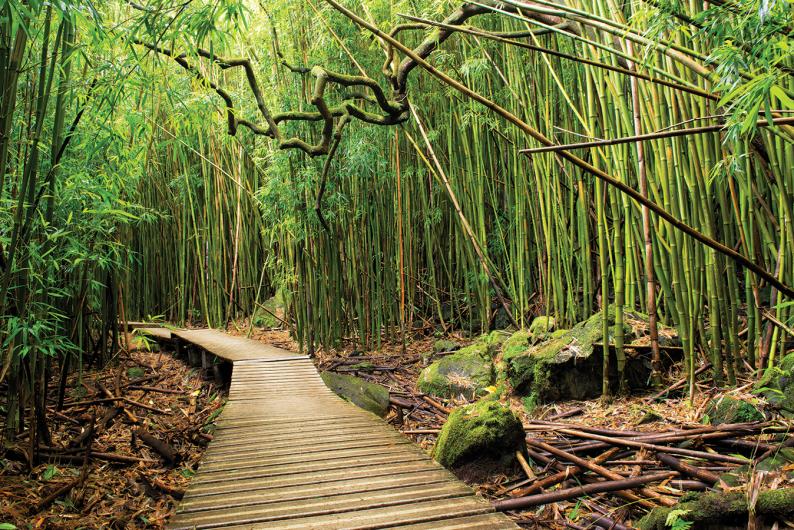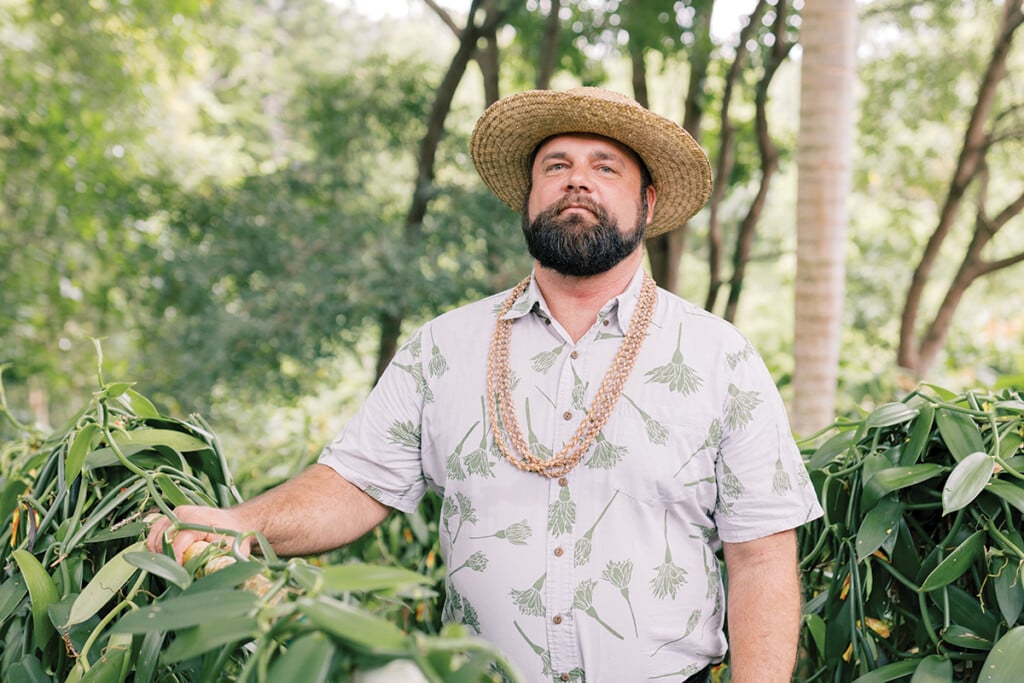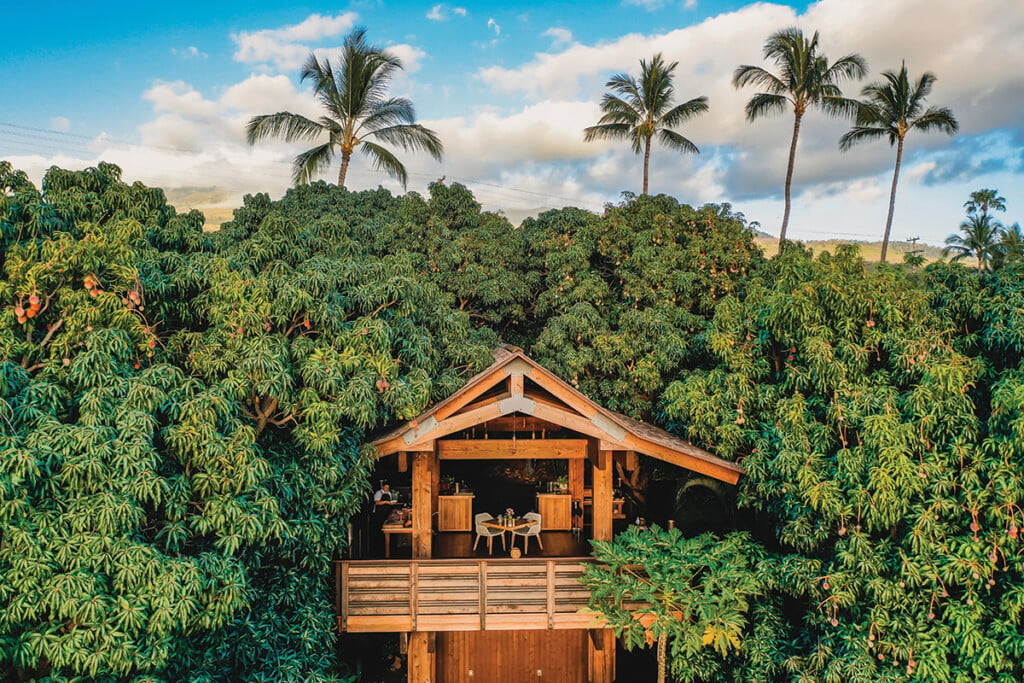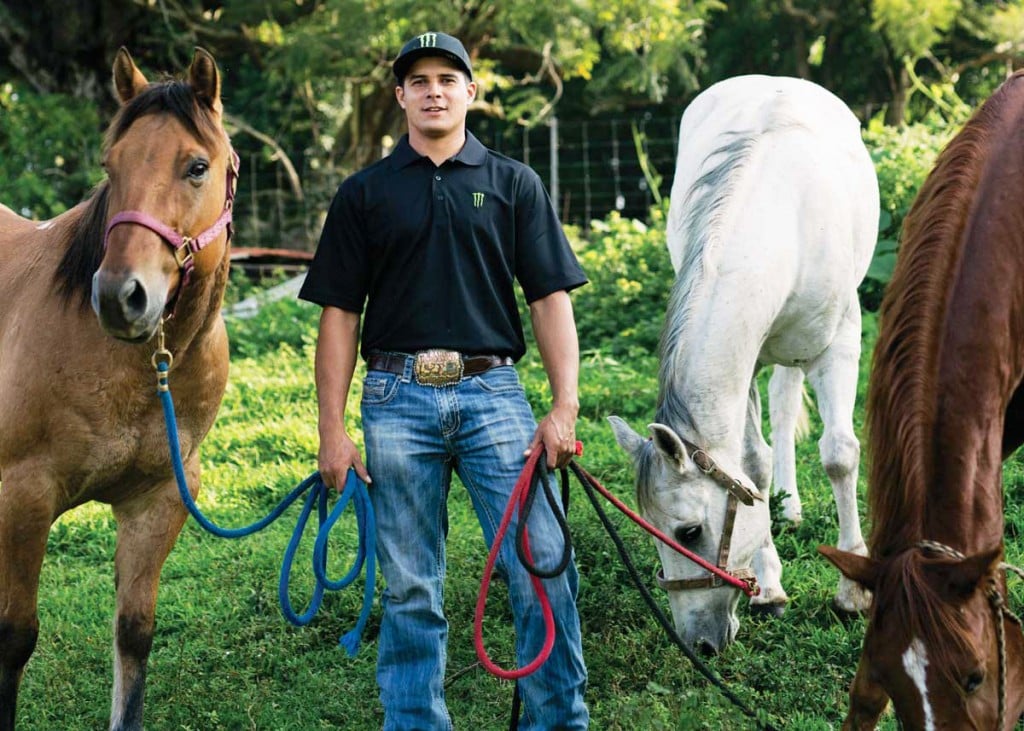Hiking the Pipiwai Trail to Waimoku Falls at Haleakala National Park
Twelve miles past Hana, in the Kipahulu district, bamboo forests and an incredible waterfall awaits in the jungle.

We’ve reached the point that most people don’t look forward to—the Road to Hana’s famous twists and stomach-churning turns. From the passenger seat, I watch the driver grip the steering wheel with both hands as he turns it all the way left, all the way right, then left again with so much precision and effort that it reminds me of those parking lot road tests, albeit an extreme version. But, there are no orange traffic cones directing our way, and the hairpin turns along Hana Highway’s coastline are not ending anytime soon. It’s morning, and we have at least two more hours of driving to go.
Our final destination is not Hana, but the okana (district) of Kipahulu, 12 miles past Hana in a section of Maui that many forget is part of Haleakala National Park. Overshadowed by the volcano’s 10,023-foot summit and enormous Mars-like crater, Kipahulu, which was added to the park in 1969, rests on the outside of the mauna (mountain) near the ocean. Its Hawaiian name literally means “fetch from exhausted gardens”—a reference to its fertile land of abundant streams and waterfalls that Native Hawaiians used to create sophisticated agricultural systems, remnants of which can still be seen.

Photo: Cody Kawamoto
Now, anyone who’s taken Hana Highway knows how impossible it is to drive without making any stops, as was the case for us. We stopped more than we probably should have—three waterfalls here, one lava tube and botanical garden there, and now it’s 2 p.m. I look up and see the sun has moved quickly across the sky, and recall the legend of Maui, the demigod, who lassos the giant orb atop Haleakala (“house used by the sun”), demanding that it slow down. We’re still about 45 minutes from Kipahulu and we have a two-hour hike planned once there. In a race to beat the sun, I corral everyone back to the car, and we grudgingly agree to not make any further stops, not even for another banana bread.

Photo: Cody Kawamoto
We finally reach the bridge overlooking the beauty that is the waterfalls and overflowing pools of Oheo Gulch and it’s at this moment that we know we’ve arrived to the Kipahulu District of Haleakala National Park. Oheo Gulch, sometimes called the Seven Sacred Pools, is known for its more than seven pools that carry water from the upland streams and empty into the Pacific Ocean.
We make a quick stop at the visitor center, and look at Hawaii Island across the sea, assuming the people there can see us just as we can see them. The two islands have had a turbulent past in Hawaiian history and, from this vantage, it’s easy to imagine the warring canoes traveling the distance between, and the battles fought in the late 18th century between Maui’s Chief Kahekili and Hawaii Island’s Chief Kalaniopuu.
Once we don our mosquito repellent, hiking boots and backpacks, we take the Kuloa Point Trail, a .5-mile loop, in the direction a large sign points. We have three hours until sunset and, quickly continue our journey toward the Pipiwai trailhead across the way. It’s a 2-mile hike (4 miles roundtrip) leading to the 400-foot-tall Waimoku Falls.

Photo: Cody Kawamoto
The trail is a popular one, so it’s frequently maintained. The pathway is large, it’s very easy to navigate and there’s ample signage to keep you out of harm’s way. We march uphill, over tree roots, up rock steps, past the first overlook of the far off Makahiku Falls, and our legs are beginning to burn.
When we think we’re almost there, a hiker tells us we have at least 45 minutes until we make it to the ohe (bamboo) forest. “It was better than the waterfall,” another person says, leaving us to wonder if we should turn around when we get to the forest, but then I question the belief that an ohe forest can be better than a 400-foot waterfall.
We continue on and cross two small bridges over more waterfalls spilling into each other, which are as beautiful as the ones we had seen earlier. It’s here where we see the ohe and the scenery shifts drastically. I step onto the wooden boardwalk that bisects and parts the dense forest for us. We walk briskly, fighting the shadows that are emerging from the sun’s lower position in the sky, exacerbated by the giant and profuse ohe surrounding us. Undeterred, and after making a pact not to turn around until we reach the end of the trail, we skip from boardwalk to boardwalk speeding up our pace, and just when we think the ohe and the trail’s uphill climb are never going to end, we see the white glimpse of water falling heavily over the top of a cliff through the trees.

Photo: Cody Kawamoto
We step into a clearing, and the landscape changes again. No longer are we surrounded by ohe. Instead, we’ve traveled back to what I know a Hawaiian forest to look like, an untouched wilderness with ti plants, ferns and moss-covered trees. Our eyes gaze upwards toward Waimoku Falls, standing tall and proud on the other side of a small stream. We hear the loud, roaring sound of water dropping 400 feet off of the giant precipice to the ground and see the swooshing stream it’s creating as it flows toward us and back in the direction we came. We make the crossing with little effort, not caring at this point if we get wet, and become hypnotized by the wonder of the waterfall’s grandeur, its magnificent power and tremendous beauty. Staring up at the enormous rock face, I can see even more water, trickling down the sides for most of its nearly half-moon-shaped circumference and I’m left in awe, my eyes wide, mesmerized by everything that is so much bigger than me.
I can only compare the feeling to the first time I saw Halemaumau Crater at Hawaii Volcanoes National Park, my mind trying to grasp the immensity of what my eyes were seeing. Being in the presence of Waimoku Falls feels that way, too, plus a little enchanting, making me wonder if its alternate name, Waimuki, which some translate to mean “whispering of wizards by the falls,” has any merit. Or, maybe it’s just its outstanding size, or the exceptional beauty that surrounds it, on Haleakala in the middle of a forest. Either way, after a journey we didn’t think we’d have enough sunlight to complete, it’s difficult to pick up my feet, which are firmly planted on the ground because they don’t want to walk away.


